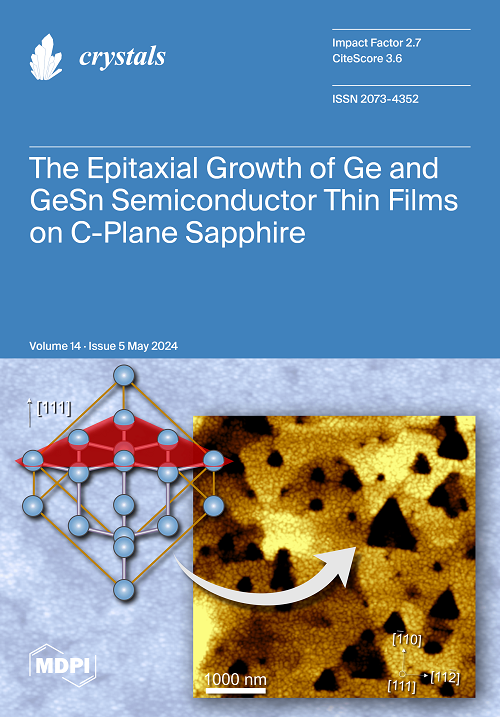硅化铀核燃料中晶粒生长的相场模拟
IF 2.4
4区 材料科学
Q2 CRYSTALLOGRAPHY
引用次数: 0
摘要
硅化铀(U3Si2)被认为是提高核电站安全性的可行燃料选择。本研究采用相场模拟来研究晶粒生长现象,包括各向同性和各向异性晶粒生长。在模拟各向同性晶粒生长时,通常假定晶粒边界(GB)的能量和流动性保持不变,以平均值表示。计算得出的晶粒生长动力学速率常数 K 与实验测量值密切相关,表明两者之间存在很强的一致性。在各向异性晶粒生长的模拟中,GB 能量和迁移率的值与 GB 之间的角度差相关。模拟结果表明,U3Si2 的生长率会受到 GB 的能量各向异性和迁移率各向异性的影响。此外,迁移率各向异性导致低角度 GB 分布比高角度 GB 分布更为普遍。然而,GB 的能量各向异性并不影响 GB 之间角度差的频率分布。本文章由计算机程序翻译,如有差异,请以英文原文为准。
Phase-Field Simulation of Grain Growth in Uranium Silicide Nuclear Fuel
Uranium silicide (U3Si2) is regarded as a viable fuel option for improving the safety of nuclear power plants. In the present work, phase-field simulations were employed to investigate grain growth phenomena, encompassing both isotropic and anisotropic grain growth. In simulations of isotropic grain growth, it is commonly assumed that the energy and mobility of the grain boundaries (GBs) remain constant, represented by average values. The calculated grain growth kinetic rate constant, K, exhibits a close correspondence with the experimental measurements, indicating a strong agreement between the two. In simulations of anisotropic grain growth, the values of GB energy and mobility are correlated with the angular disparity between GBs. The simulation results demonstrated that the growth rate of U3Si2 can be influenced by both the energy anisotropy and mobility anisotropy of GBs. Furthermore, the anisotropy in mobility results in a greater prevalence of low-angle GB distribution in comparison to high-angle GBs. However, the energy anisotropy of GBs does not impact the frequency distribution of the angle difference between GBs.
求助全文
通过发布文献求助,成功后即可免费获取论文全文。
去求助
来源期刊

Crystals
CRYSTALLOGRAPHYMATERIALS SCIENCE, MULTIDIS-MATERIALS SCIENCE, MULTIDISCIPLINARY
CiteScore
4.20
自引率
11.10%
发文量
1527
审稿时长
16.12 days
期刊介绍:
Crystals (ISSN 2073-4352) is an open access journal that covers all aspects of crystalline material research. Crystals can act as a reference, and as a publication resource, to the community. It publishes reviews, regular research articles, and short communications. Our aim is to encourage scientists to publish their experimental and theoretical results in as much detail as possible. Therefore, there is no restriction on article length. Full experimental details must be provided to enable the results to be reproduced. Crystals provides a forum for the advancement of our understanding of the nucleation, growth, processing, and characterization of crystalline materials. Their mechanical, chemical, electronic, magnetic, and optical properties, and their diverse applications, are all considered to be of importance.
 求助内容:
求助内容: 应助结果提醒方式:
应助结果提醒方式:


